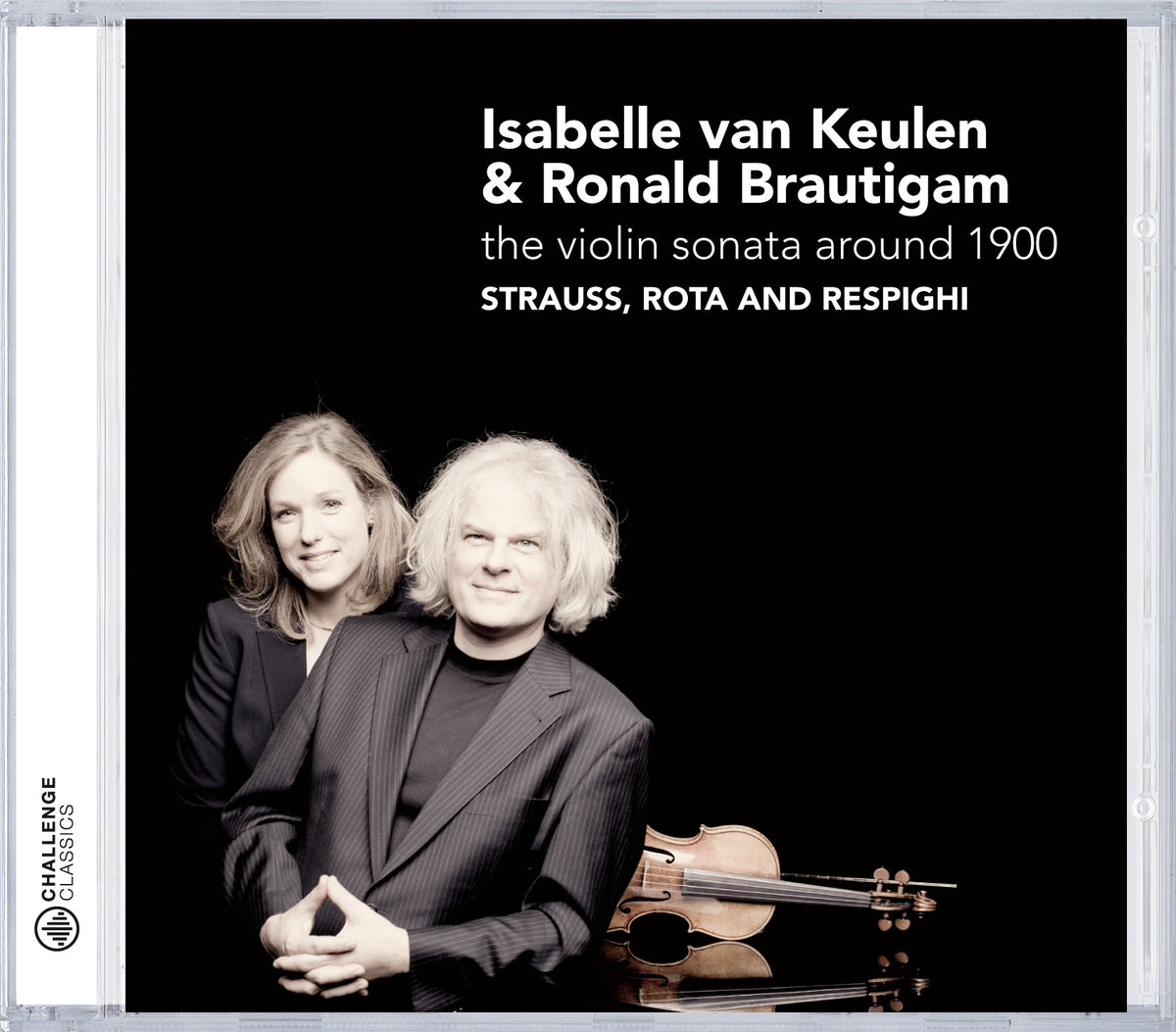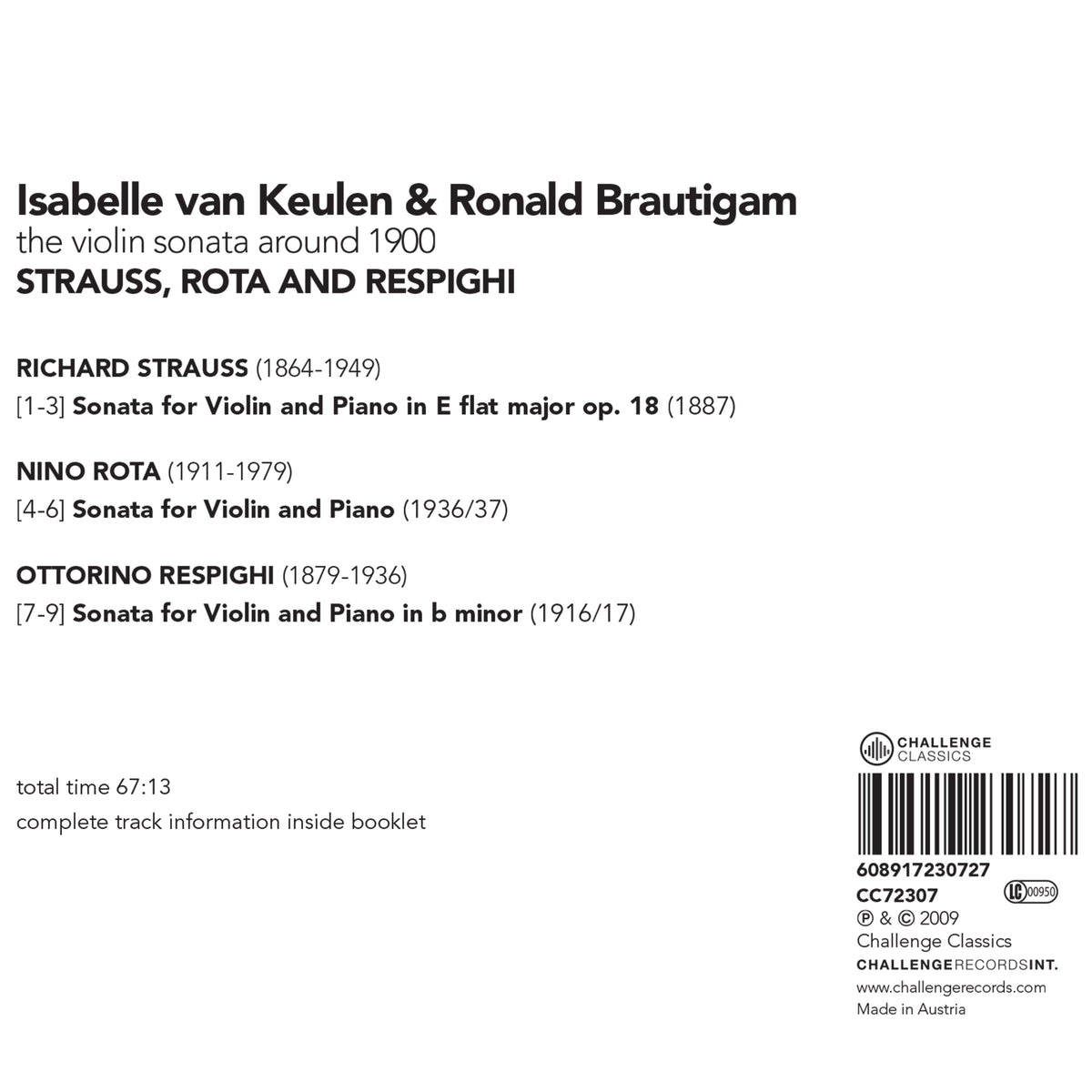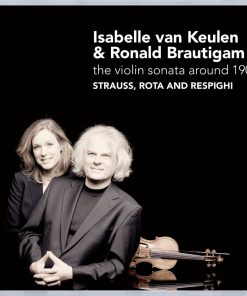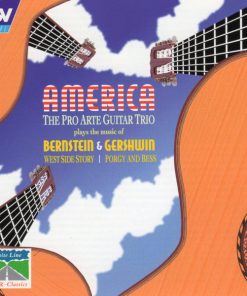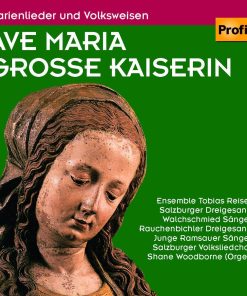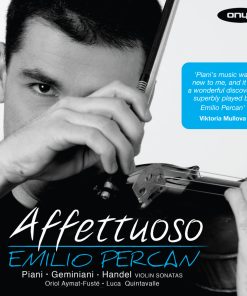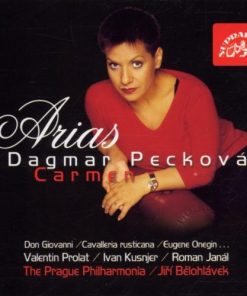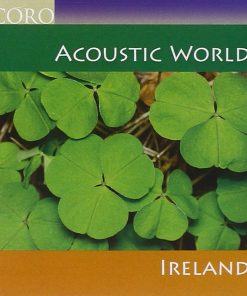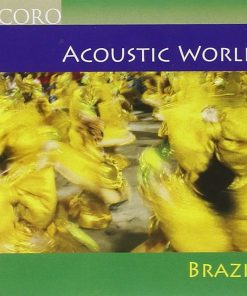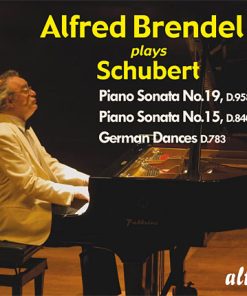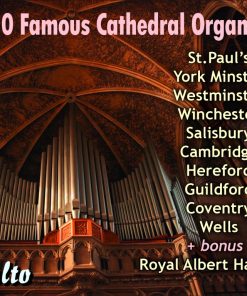THE VIOLIN SONATA AROUND 1900 (STRAUSS, ROTA & RESPIGHI): ISABELLE VAN KEULEN, RONALD BRAUTIGAM CHALLENGE
$ 2,99 $ 1,79

RICHARD STRAUSS
01. Sonata for Violin and Piano in E flat major op. 18: Allegro, ma non troppo 10:49
02. Sonata for Violin and Piano in E flat major op. 18: Improvisation. Andante cantabile 07:56
03. Sonata for Violin and Piano in E flat major op. 18: Finale. Andante – Allegro 08:20
NINO ROTA
04. Sonata for Violin and Piano : Allegretto cantabile con moto 06:11
05. Sonata for Violin and Piano : Largo sostenuto 03:40
06. Sonata for Violin and Piano : Allegro assai moderato 04:33
OTTORINO RESPIGHI
07. Sonata for Violin and Piano in b minor: Moderato 08:46
08. Sonata for Violin and Piano in b minor: Andante espressivo 08:34
09. Sonata for Violin and Piano in b minor: (Passacaglia) Allegro moderato ma energico 08:21

Strauss, Rota, Respighi and the violin sonata around 1900
At the turn of the 19th to the 20th century the violin sonata experienced a considerable renaissance. A fundamentally conservative genre, it suddenly sparkled with vitality. Mozart developed its classical formula: violin and piano are two equal partners in dialogue with neither the piano being reduced to a mere accompanist nor the violin being reduced to mere colouring of the melody voice; a three-movement-pattern; the first movement being based on the so called sonata form with two themes of clearcut atmospheric contrast and their developement.
The success of the wide-spread violin sonatas by Mozart and Beethoven made this canonized form so intimidating for nearly a century that composers could hardly deal with it creatively. However Schumann and Brahms faced the challenge with bravura. After them development gained new momentum. The form of the violin sonata was either rejected as a whole or became a field of creative experiments, on an international scale. The relationship to tradition is the crucial point of the resulting works and it makes up part of their fascination. The works in this album are examples of three different ways of coming to terms with desire to change, the violin sonata was experiencing around 1900.
Strauss: Sonata as Rhapsody
Richard Strauss (1864-1949) wrote his Sonata for Violin and Piano in E flat major op. 18 between June and November 1887. It marks the end of an era in more then one way: as the last piece of chamber music in the oeuvre of the then 23-year-old composer, as the end of his early work period; and the end of the Brahmsian tradition as a whole, within whose language it is couched, whilst yet giving up part of its original grammar.
Strauss modulates its main subject academically correctly into far-distant keys and demonstrates his brillant technical skills and inventiveness within the time honored frame. The side subject consists of two connected motifs reminiscent of Brahms’s or Beethoven’s economical exploitation of thematic material. The developmentsection moulds this material however, as often in Strauss’ early work, not organically but capriciously lining up idea after idea, episode after episode in a brash showing off of creative exuberance. A grandiose Coda à la Liszt opts for a brillant effusion of sound intending clearly the effect of an overwhelming finale.
The second movement enjoyed in print and performance a second life as „Improvisation aus Richard Strauss’ op. 18“, which would have been a fact unthinkable for the slow movements of sonatas by Brahms, Schumann or Beethoven. Its’ form is that of a romance (ABA), its thematic material recalls the melodious flow of Felix Mendelssohn-Bartholdy’s „Lieder ohne Worte“, so dear to the infant prodigy Richard Strauss.
The operatic atmosphere of the third movement seems to mark the composer’s definite farewell to the world of absolute music cultivated in the home of his father. The slow introduction pays a last tribute to the shining example of Brahms. After that, unleashed by the main subject reminiscent of „Der Rosenkavalier“, the overwhelming texture of a seemingly whole orchestra gushes into the sonata showing Strauss as being not so much interested in organic theme developement as in drawing the utmost suprise effects out of the limited instrumental forces of violin and piano.
The violin sonata stands within this professional/semi-professional tradition of house-music-musicianship but exceeds it considerably. It’s first public performance took place in Elberfeld near Düsseldorf on October 3rd 1888, Robert Heckmann playing the violin and Robert Buths the piano. At the first public performance in Munich a year later Strauss himself sat at the piano. The work featured regularly on his chamber music programmes, as also within the internationally broadcast official celebration of his 85th anniversary in Garmisch-Partenkirchen on June 11th, 1949 Elisabeth Bischoff and 37-year-old Georg Solti being the instrumentalists.
Rota: Hommage à Mozart
Nino Rota (1911-1979), Respighi’s junior by one generation and musically educated at Consolo‘s bolognese Liceo, was lucky enough to profit by the groundbreaking work of the „generazione dell’ottanta“. Today he is internationally known for his famous film scores for Federico Fellini, Luchino Visconti and Francis Ford Coppola. Throughout his life he created a huge corpus of stage-, instrumental- and chamber music. His catalogue of works consists of more then 300 items including eleven operas, five ballet scores (two of them for Maurice Béjart), four symphonies, eight solo concertos (most of them for his pupils at the Bari conservatory), innumerable songs and a vast amount of incidental, sacred and chamber music. Rota also wrote chamber music throughout his life. His thesis at the Milan Conservatory in 1937 dealt with Italian renaissance music. It’s no wonder that the music of the classical and pre-classical era was a constant point of reference for his own music.
Rota was a prodigy child, writing his first oratorios at the age of eight, conducting them publicly at the age of twelve, and composing his first opera at the age of fifteen. He studied composition with Casella and Pizzetti in Rome, continued his studies in conducting on Toscanini’s recommendation with Fritz Reiner at the Curtis Institute at Philadelphia and finally himself taught for 38 years at the Conservatory of Bari in south Italy, 27 of them as director. His violin sonata was composed at the end of his official studies in 1936/37, a period of intense productivity in the field of chamber music. With its lucid and weightless writing and its simple but refined design there is a certain air of neo-rococo about it. The melodious main theme displays a surprisingly refined atmosphere as does the whole of the first movement, an unconventional feature for the usually flamboyant opening movement of a sonata. The second theme evolves, in spite of its characteristic upspring of an octave, the mellifluous train of a fine legato-song. The development section blends both themes with the utmost ease and elegance, transforms them continually and runs into a shortened reprise without a showy coda. The movement achieves its’ charm by its’ unpretentious simplicity.
The very short Largo sostenuto is based on the romanza-form (ABABA) and builds up a slightly heavy-blooded yet not too stark contrast (g minor) to the first movement with hints of passionate panache in the B-sections. Follows the finale without pause. It returns to the ground key of G major and thereby builds a bridge back to the first movement which is enhanced by its main theme. The structure of the movement is a combination of rondo-finale and variations as is often encountered in Mozart’s concertos and sonatas. So together with it’s cyclic form, Rota’s sonata confronts us with a lofty hommage to the Viennese master.
Rota dedicated his violin sonata to the eminent Bolognese pianist Guido Agosti (1901-1989), a close friend of his who was linked by some premieres to Respighi as well. It featured prominently in the repertoire of the famous Italian duo Luigi Dallapiccola and Sandro Materassi.
Respighi: Innovation by Chamber Music
Whereas Strauss grew up within a world of chamber music, serious instrumental music didn’t play any role in 19th century Italy. Opera ousted all other genres. Regular symphonic concerts only appeared in the second half of the century, chamber music concerts even later. Strauss had to revolt against chamber music in order to free himself from the confines of the musical world of his fathers. The generation of Italian composers born about 1880 revolted against the world of their fathers which was dominated by opera and verismo, by writing and promoting chamber music. And they did it not only by producing chamber music, and also by rediscovering and re-evaluating ancient music with its clearcut, lucid forms. Moreover instrumental and chamber music of the Baroque era brought back to consciousness the long forgotten leadership of Italian composers even in this area. Composers like Malipiero, Casella, Orefice, Respighi rediscovered and edited sonatas and concertos by Vivaldi, Corelli, Vitali, Sammartini, Veracini, works by Frescobaldi, Monteverdi, Gesualdo and many others. In this they were laying along with musical scholars of their time the foundation of the actual revival of ancient music. At the same time they ardently argued for restoring Italy’s greatness on the field of instrumental music. At the core of this movement was the old university town of Bologna with its vast collections of ancient musical manuscripts and prints, particularly that of Padre Martini, the renowned musical scholar of the 18th century. Ottorino Resphighi (1879- 1936), born and tightly rooted in that city even when living and teaching in Rome, delved passionately as an ardent collector and bibliophile in the Bolognese archives.
Respighi’s one and only violin sonata was composed in the years 1916 and 1917 immediately after „Fontane di Roma“. It is his first mature and one of his most important pieces of chamber music. Obviously it belongs in the above mentioned context of the „rinnovamento strumentale italiano“, yet apart from the baroque pattern of the Passacaglia in the third movement it is rooted in the late romantic German sonata-tradition (Brahms), which was adopted and adapted to a Latin sensibilty by French composers like Franck, Fauré and Saint-Saëns after the Franco Prussian War of 1870/71. Respighi steps into this tradition and pushes it further in a highly original way.
The main theme of the first movement (it emerges after two bars of an atmospheric piano-introduction in the violin) is characterized by passionate upswings over huge intervals running out in slightly calmer melodic lines. Its uneven rhythms underline its nervously pressing impetus. The second theme – dolcissimo and in the parallel key of D major – flows in small intervals and calmer time values and creates a contrasting atmosphere of cantability. In the development section these two worlds blend marvellously, they get sharply juxtaposed again, interlocking, constantly changing their harmonic and melodic features. The dialogue of the instruments oscillates between the extremes of a total fusion and an, at times more lyrical, at times more dramatic, exchange of the constantly evolving thematic material. Harmonically as well as melodically Respighi invests so much inventiveness in the development of the material that the basically conservative form shines with freshness. It increases its’ intensity passionately till it bursts out into a grandiose cadenza in triple fortissimo and runs, via the restatement of the themes con grande espressione e dolcezza in the highest register of the violin, out into a serene coda with broken piano chords.
The Andante espressivo again follows the classical romanza form (ABA) with a long, athmospheric piano-introduction and a passionate, bipartite B-section. The finale in the form of a passacaglia is the most unusual feature of Respighi’s sonata. The bass theme, that runs throughout the 17 variations, consists of ten bars and alludes, with its punctuated sarabande-rhythm, to baroque music. The baroque variation techniques of diminuition of long time values, of passaggio and closely interlocked dialogue dominate the first five variations. The sixth features a piano solo and unleashes a flow of further variations that increase constantly in freedom and boldness. Respighi himself premiered his violin sonata together with his violin teacher Federico Sarti in Bologna on March 3rd, 1918 and repeated its’ triumphal success the following night. The dedication however went to his close friend since his Berlin stay in 1908/09, the Bolognese violinist Arrigo Serato, and the pianist Ernesto Consolo, director of the Liceo musicale di Bologna. Together they presented the sonata publicly for the first time in Rome on March 14th, 1919, where in the meantime Respighi and Serato were called to teach at the Accademia di Santa Cecilia and where Serato kept a sophisticated salon in the Palazzo Taverna which of course had witnessed the private premiere of the piece well before that date.
Boris Kehrmann
Fast Shipping and Professional Packing
Due to our longstanding partnership with UPS FedEx DHL and other leading international carriers, we are able to provide a range of shipping options. Our warehouse staff are highly trained to pack your goods exactly according to the specifications that we supply. Your goods will undergo a thorough examination and will be safely packaged prior to being sent out. Everyday we deliver hundreds of packages to our customers from all over the world. This is an indication of our dedication to being the largest online retailer worldwide. Warehouses and distribution centers can be located in Europe as well as the USA.
Orders with more than 1 item are assigned processing periods for each item.
Before shipment, all ordered products will be thoroughly inspected. Today, most orders will be shipped within 48 hours. The estimated delivery time is between 3-7 days.
Returns
The stock is constantly changing. It's not entirely managed by us since we are involved with multiple parties such as the factory and our storage. The actual stock can fluctuate at any time. Please understand it may happen that your order will be out of stock when the order is placed.
Our policy is valid for 30 days. If you haven't received your product within 30 days, we're not able to issue either a return or exchange.
You are able to return a product if it is unused and in the same condition when you received it. It must also still remain in the original packaging.
Related products
MUSIC CD
MUSIC CD
MUSIC CD
MUSIC CD
